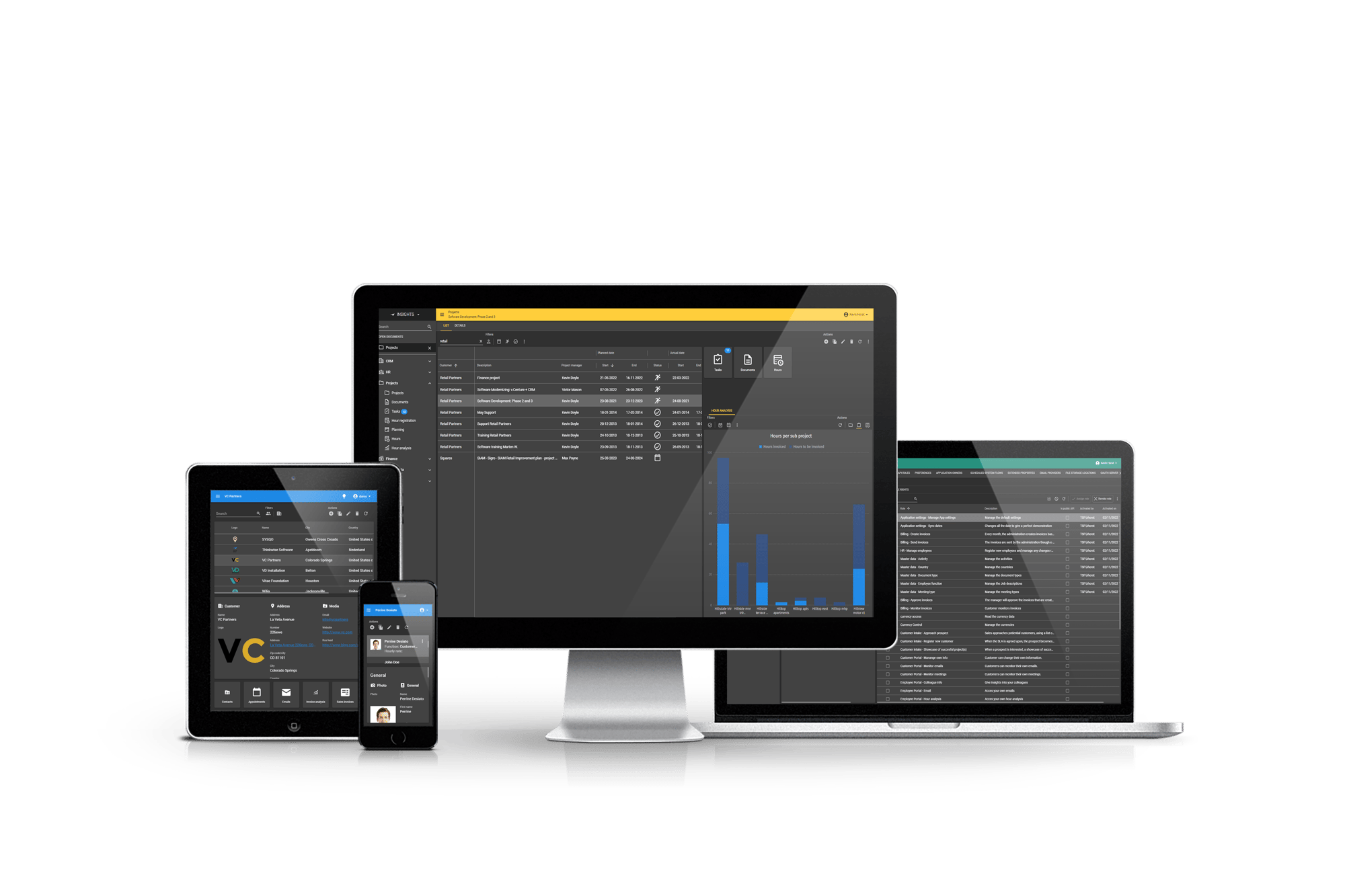Replace or modernize Uniface applications

Uniface to Rocket to... Thinkwise
Despite the efforts of subsequent owners to serve a large installed base, the reality clear demonstrates serious issues to both companies building and maintaining inhouse applications as well as packaged software vendors serving many customers:
Get your free whitepaper on how to modernize Uniface applications with the Thinkwise Platform
ALTERNATIVE TO RPG-AS/400
As a Uniface user you are faced with a critical decision. Are you going to start all over from scratch or switch to version 10? Both take the same amount of effort, which means that as a customer you are effectively held hostage by the software. This is the moment when the software has come to the end of the line, and you, as an organization, must look for a way to modernize Uniface applications: fast, future fit and securely.
So how does Thinkwise differ from Uniface?
Always up-to-date
Gone are the days of technologically obsolete software
With Thinkwise, your applications become technology independent; you focus on maintaining the model, rather than single lines of code. The underlying technology, such as User Interfaces, Service Tiers, and databases are periodically updated for you, without impacting previously built applications. This means that a Thinkwise application will never become a legacy in any of these areas and will always remain technologically fit.
Flexible test database
Rapid & efficient testing
Software development requires a great deal of testing and continuous improvement. The Thinkwise Platform integrates test cases into the model, which means they continue to function properly even after changes to either the data model or the GUI model.
In addition, the Thinkwise AI-powered development environment lets you automatically generate test cases based on the model.
Authorization and permissions
Built-in authorization system: no more need for manual programming
The Thinkwise Platform features a built-in authorization system. Many other platforms do not have authorization integrated into their systems, which then has to be programmed manually. Managing and maintaining a separate asset properly in the long run is a complex challenge. When integrated in the model, it is very easy to create new users, including all associated rights and roles. This is crucial in organizations with many different types of users in- and externally and security vulnerabilities.
The platform also supports OpenID authentication by default. Various OpenID providers, such as Azure AD, Facebook, Gmail, etc. are available. Furthermore, the platform itself can be used as an OpenID provider, allowing third-party applications to use Single Sign-on (SSO) with accounts stored in the Thinkwise Platform.
Migrate your applications easily
Modernizing comprehensive systems using the Upcycler
A major added value of the Thinkwise Platform is its integrated solution for modernizing RPG-AS/400. With the Upcycler you can create a first version of a Thinkwise application by simply importing an RPG-AS/400 application. The result will obviously not be ready for production just yet, but a significant part of the work will have been done for you automatically.
The process to Upcycle a RPG-AS/400 application roughly consists of the following steps
- Extracting model & data
- Importing model
- Transforming meta model to Thinkwise model
- Deploying the application
- Importing legacy data into the Thinkwise application
Integration
The key to a data-driven organization
It goes without saying that software needs to be able to communicate with other systems. Our integrated service tier provides secure access to all desired data and functionality through an open API based on the OData protocol.
The Thinkwise Platform offers extensive integration capabilities such as:
- Database connectivity
- Web Services
- Business Intelligence
- Microsoft Exchange
- Office and reporting
Thinkwise minimizes lock-in to a minimum by offering open standards. We don't have a proprietary programming language and the entire model you build and the database are directly accessible outside the Thinkwise environment. You can use your own cloud or servers and even deploy the business logic to a location of your choice. In the event that you really want to stop using Thinkwise, everything can be saved or reused, including code comments.
With the Thinkwise Upcycler for Uniface you can import your existing Uniface legacy applications and all other Uniface assets into the Thinkwise development environment. This enables you to modernize and migrate your legacy Uniface applications to a powerful, future-proof environment.
A Thinkwise application is defined by a model that is stored in a database. The application itself is derived at runtime from that model. This means you no longer have to build separate forms, reports etc., which makes maintenance much more efficient. The complete Thinkwise metamodel including all logic is stored in a database, where it can easily be accessed and manipulated by developers.
There are several reasons why this will not happen. The main reason is that the platform itself is built with the platform, just as a 3D printer prints the next, better version of a 3D printer. This means that just like your applications, the platform itself will never become technologically obsolete, so it will not become legacy itself.